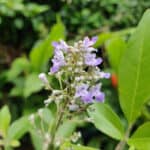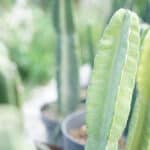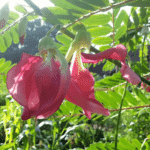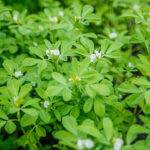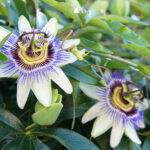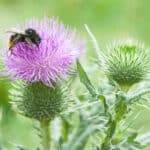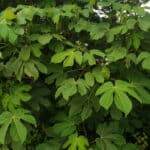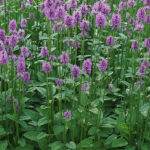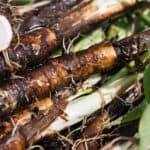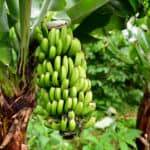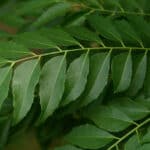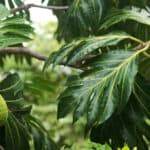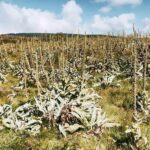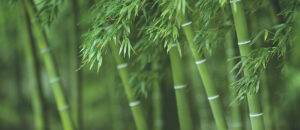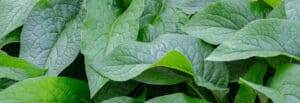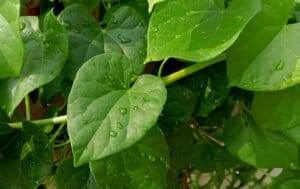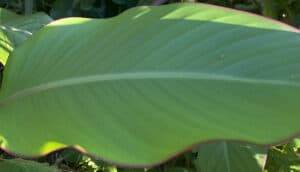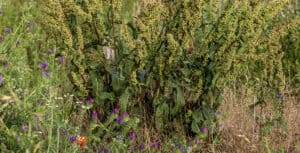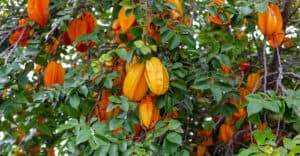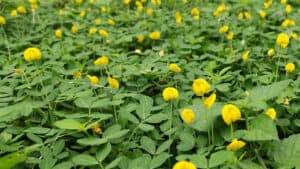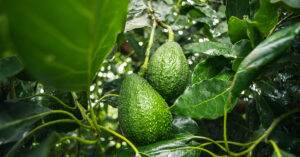I’ve always been weird about artificial detergents, fragrances, and dyes that are in most commercial soaps and shampoos.
And I have to say I was so excited when I found my shampoo ginger flowering in my garden.
If you don’t live in the tropics, you may have never heard of this unique ginger variety.
This amazing plant exudes a slimy liquid in the flowers that you can use as– that’s right, you guessed it– shampoo. But beyond that, the rhizomes and leaves are edible and medicinal.
And if that isn’t enough, the plant itself is absolutely stunning, which is always a bonus in my garden.
So let’s go ahead and learn more about this luxurious ginger variety.
Plant Overview
Shampoo ginger is just one of the common names that Zingiber zerumbet goes by.
It is also called bitter ginger, pinecone ginger, or awapuhi in Hawaii.
Each of these names describes a certain quality of this variety of ginger that distinguishes it from other culinary or ornamental varieties in the ginger family.
Shampoo ginger originated in Asia and from there spread to Australia and Polynesia.
Traditionally it has been used as a spice in cooking, though it is more bitter than common ginger.
It is used medicinally to treat a whole range of conditions, including inflammation, asthma and coughs, and digestive problems just to mention a few.
But it is probably best known for the fact that in Hawaii, it was traditionally used as shampoo and conditioner.
Like other species in the ginger family, shampoo ginger is a perennial plant, so the leaves and flowers above ground die annually.
But the plant will return each spring, growing larger than the year before.
The above-ground stems sprout alternating leaves and grow to be 4 – 6 feet tall.

It takes several years before the plant begins to produce the pinecone-shaped inflorescence that it is best known for.
Now, if you’re like me, a permaculture practitioner without a degree in botany, you are probably wondering exactly what an inflorescence is.
The inflorescence is where multiple flowers cluster or grow together.
So those pinecone-shaped things we call flowers aren’t actually flowers but are, in fact, inflorescence.
Who knew, right?
The cones start out a greenish white but eventually change to a deep red color.
Small yellowish-white flowers grow out of these cones, as you can see in the photo.

The inflorescence grows directly from a node in the rhizome rather than from a leaf stem.
They don’t grow as tall as the leaf stems, so look for them below the leaves closer to the ground.
Inside the inflorescence is a clear, fragrant gel that can be used as shampoo, as we’ll describe later.
How To Grow More Shampoo Ginger
Like most ginger varieties, shampoo ginger is easily propagated from rhizomes.
If you are lucky enough to know someone who is growing shampoo ginger already, see if they have rhizomes they can share.
Since shampoo ginger spreads very quickly, chances are they will be happy to dig some rhizomes from their garden.
Otherwise, you can purchase from specialty garden shops online.
Once you have your rhizomes, the next step is to decide where to plant them.
If you live in USDA Zones 9-11, you can safely plant shampoo ginger in your garden.
However, if you live someplace cooler, you will want to grow your rhizomes in a container so you can keep them inside during cold weather.

When choosing your location, keep in mind that shampoo ginger is a deciduous plant, so it has a dormant period without leaves or flowers.
During this time, you will have an empty patch in your garden or an empty pot.
Shampoo ginger is an understory plant, so you want to make sure to plant it in a spot with partial shade.
Choose an area in your garden with rich, well-drained soil.
It wants a moist, humid climate, but the rhizomes shouldn’t be saturated.
If you live in an area without a lot of rain, make sure it receives at least an inch of water a week.
Keeping Your Shampoo Ginger Healthy
Shampoo Ginger is pretty easy to care for.
In fact, it is considered invasive in some areas, so you may want to be careful where you plant it.
It spreads quickly and can easily take over your garden.
The biggest threat to your shampoo ginger is a lack of water.
You want to ensure your plants receive at least an inch of water per week.
But don’t over saturate them. Too much water can lead to rot.
Shampoo ginger can also be susceptible to pests like aphids, mites, and cardamom root grubs.
But luckily, you can use companion planting and natural pesticides like neem oil to help prevent infestations.
How to Get Shampoo Straight From the Plant
My favorite part of growing shampoo ginger is harvesting the gel from the inflorescence. It’s so easy.
All you need to do is gently squeeze the pinecone-like inflorescence, and a clear, fragrant gel will come out.
I usually squeeze it directly into a jar before I shower.
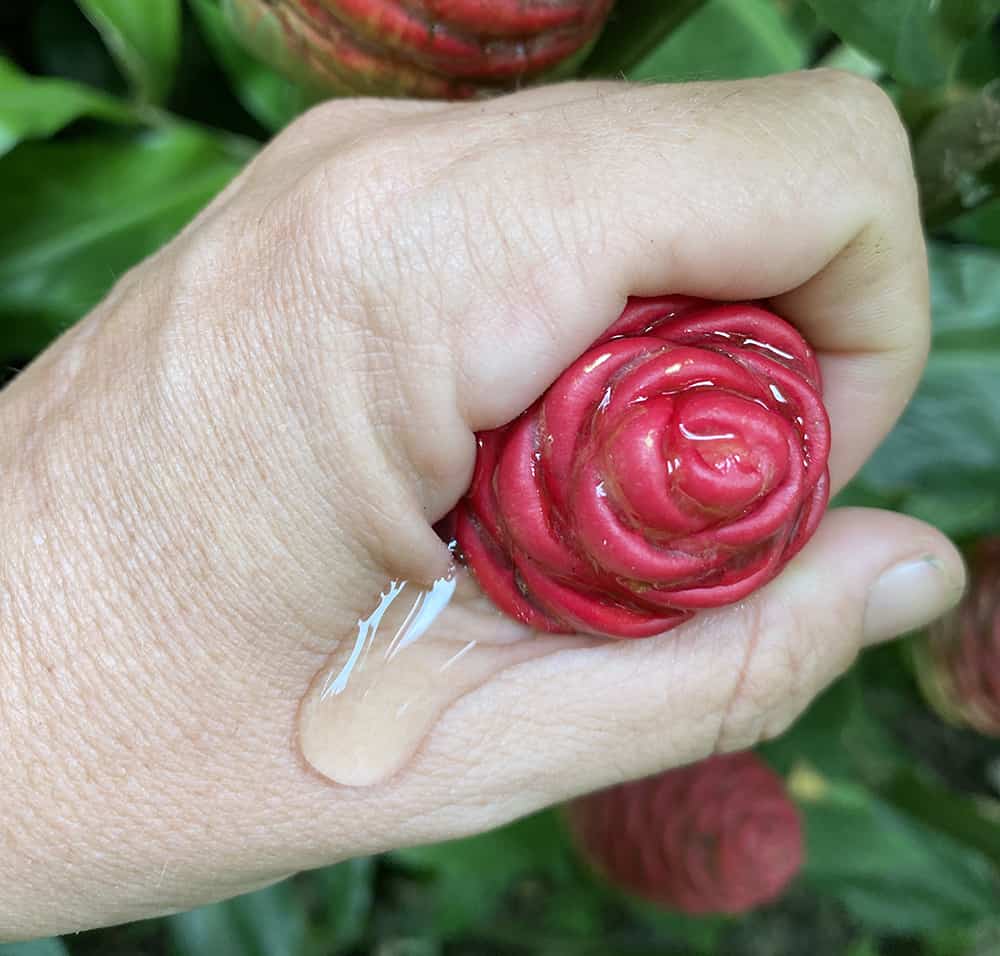
You want to squeeze the inflorescence gently, so you don’t damage them.
That way, they can refill each day.
The other way to get the gel is to cut the shoot with the inflorescence.
Then you can turn the plant over in a jar and let the gel drain out. Again you will want to squeeze the cone to make sure you are getting all the gel available.
With this method, you don’t have to worry about damaging the plant, so you can probably squeeze out more gel.
However, it’s a one-time-only kind of thing, so I personally always just gently squeeze the plant without cutting them.
You can apply the gel to wet or dry hair.
I use it like shampoo and rinse it out. It leaves my hair silky and shiny afterward.
But you can apply it and not rinse it, kind of like a leave-in conditioner.
Unfortunately, the inflorescences are only around for part of the year.
If you find you have an abundance in your garden, you can freeze the gel for when it is not available fresh.
Using Other Parts of the Shampoo Ginger Plant
Besides shampoo, shampoo ginger has other benefits.
You can harvest the rhizomes and use them just like you would use culinary ginger.
Though you will find the flavor is more bitter than the ginger you are probably used to.
The leaves are also used in cooking.
They are often used to wrap food while it is being cooked.
This method also helps impart a subtle ginger flavor to your meal.
The rhizome can also be used to make a medicinal tea traditionally used to treat nausea, digestive problems, coughs, and other complaints.
In Conclusion
Shampoo ginger is an excellent addition to a tropical permaculture garden.
Not only is it eye-catching, but it provides a natural, zero-waste shampoo.
Beyond that, you can use the rhizomes and leaves to help spice up your meals.
It grows easily in the right conditions with little to no maintenance.
In fact, it can quickly take over your garden patch. But wait until it dies back and dig up some rhizomes.
Then you can propagate it to other parts of your garden.
And when you have all that you need, share with your friends – cause that’s what permaculture is all about.


